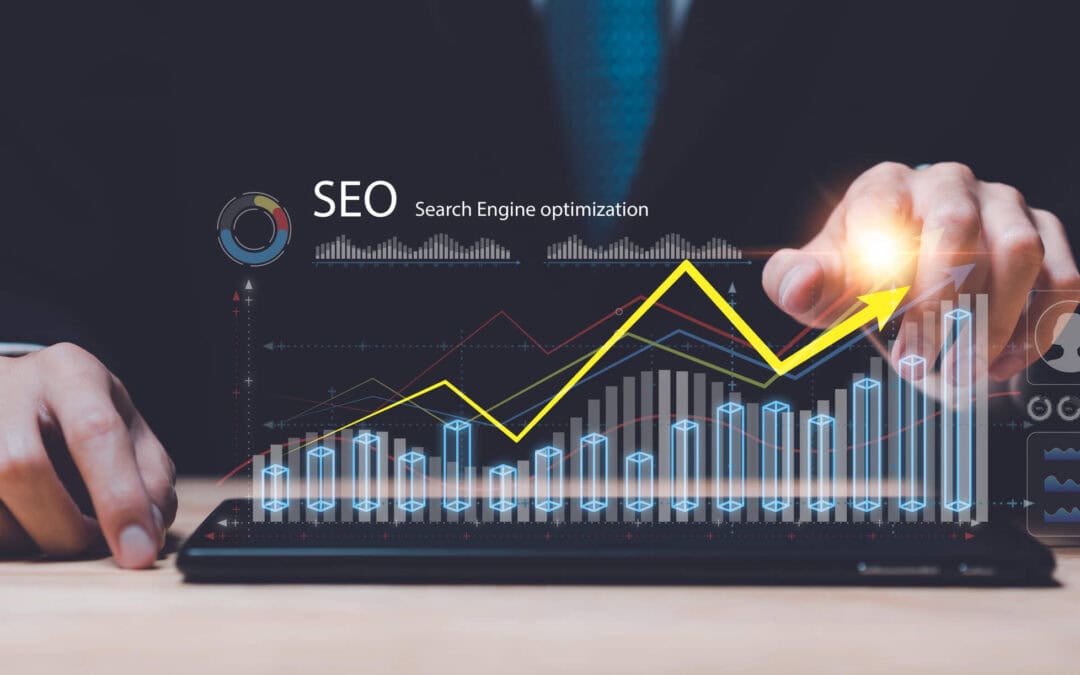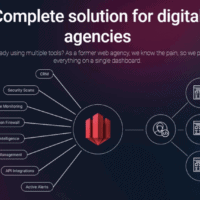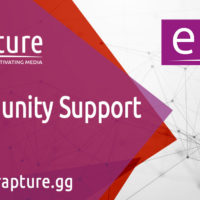In today’s digital age, visibility is everything: Search Engine Optimization (SEO) has evolved beyond simply ranking well on search engines; it’s now a fundamental strategy for helping search engines understand your content while enabling users to find and engage with your site.
Understanding SEO
The Foundation of Digital Success
SEO is essential to optimizing your website to improve its visibility and attract organic traffic. As we navigate through 2025, this practice has become increasingly crucial for businesses seeking a strong online presence.
Why SEO Matters More Than Ever
Enhanced Digital Visibility Search engine optimization helps your content reach more people who are genuinely interested in what you offer. This targeted approach ensures your website appears in front of the right audience at the right time.
What is SEO and Why Does it Matter?
SEO is fundamentally about creating high-quality content that provides real value to your target audience. During 2025, SEO will continue to evolve as an indispensable component of digital marketing strategy, focusing on maintaining and improving your website’s long-term performance in search results. How we use it will change over time, as it has for the last decade, but that is not a bad thing.
Key Benefits of SEO for Businesses
Enhanced Brand Visibility
One of SEO’s main advantages is improved visibility in search results, directly impacting your ability to attract organic traffic. By implementing effective SEO strategies, businesses can achieve higher Google/Bing rankings and increase online visibility.
Cost-Effective Traffic Generation
Unlike paid advertising, SEO provides a sustainable approach to generating website traffic. When done correctly, it offers long-term benefits and continues to work for your business around the clock. The key is focusing on optimal website performance, which directly correlates with better search results. Think of this as organic SEO: like a garden, it requires constant tending and pruning to deliver your desired outcome year in and year out.
Building Trust and Credibility
Modern SEO practices emphasize demonstrating E-E-A-T (Experience, Expertise, Authoritativeness, and Trustworthiness). This focus helps businesses build credibility with search engines and users, creating a foundation of trust essential for long-term success.
Strategic Keyword Implementation in Website Content
Understanding how to effectively use keywords within your content is fundamental to successful SEO. According to a recent study by Semrush, properly optimized keyword usage can increase organic traffic by up to 50%. Here’s how to master keyword implementation:
Primary Keyword Placement
Include your main keyword in the first 100-150 words of content
- Place keywords naturally in headings (H1, H2, H3).
- Maintain a keyword density of 1-2% to avoid over-optimization.
- Include variations of your keyword to account for semantic search.
Long-Tail Keywords
Long-tail keywords typically have lower search volume but higher conversion rates. These more specific phrases often indicate stronger user intent and face less competition. For example, instead of targeting ” plumbing services”, you might target “affordable plumbing services in [location]”.
Keyword Research and Selection
Before implementing keywords, thorough research is essential:
- Use tools like Google Keyword Planner to identify valuable keywords.
- Analyze the search intent behind each keyword.
- Consider keyword difficulty and competition.
- Look for related terms and semantic variations.
Content Optimization Best Practices To maximize the impact of your keywords:
- Write for humans first, search engines second.
- Use LSI (Latent Semantic Indexing) keywords.
Include keywords in:
- Meta descriptions
- Image alt text
- URL structures
- Internal links
Avoiding Keyword Stuffing While keywords are crucial, over-optimization can lead to penalties. Here’s how to maintain balance:
- Use keywords naturally within your content.
- Incorporate synonyms and related terms.
- Focus on topic relevance rather than keyword density.
- Ensure readability
Real-World SEO Success Stories and Examples
Local Business Example
Physical Footfall and Location Traffic Increase Example – Consider a London bakery seeking to increase foot traffic. Instead of competing for broad terms like “bakery” or “cupcakes,” they focus on location-specific phrases like “best cupcakes in London” or “artisan bakery South London.” This targeted approach can result in:
- Increase in local search visibility.
- Higher conversion rate from online searches to store visits
- Improved customer engagement through local reviews
Search Intent Optimization Examples – Different types of searches require different content approaches based on the bakery example:
Informational Intent:
- “How to make chocolate chip cookies.”
- “Best ingredients for cupcakes.”
- “Small business SEO tips.”
Transactional Intent:
- “Buy organic bread online.”
- “Order custom birthday cake.”
- “Book SEO consultation.”
Navigational Intent:
- “Miami Sweet Spot bakery hours.”
- “Downtown Bakery location.”
- “Contact local SEO expert.”
E-commerce Example – A sportswear SEO strategy demonstrating the power of targeted optimization. Their approach included:
- Product-specific keyword optimization.
- Category page optimization.
- Mobile-first design.
- Detailed product descriptions.
- User-generated content integration.
Services Example – A Retail bank success story showed how comprehensive SEO can transform digital presence:
- Achieved over 20 million monthly organic visits.
- Improved user engagement metrics.
- Enhanced conversion rates through targeted content.
- Established authority in the financial services sector.
These real-world examples demonstrate how businesses across different sectors can leverage SEO effectively. Whether you’re a local business, e-commerce store, or service provider, SEO principles can be adapted to meet your specific needs and goals.
Takeaway
Remember, successful SEO requires a combination of these elements. Implementing these practices while maintaining natural, high-quality content that serves your audience’s needs is key.
A Final Note:
It is important to remember that SEO is not a ‘plug it in and walk away’ process. You must schedule regular strategy reviews and set realistic Key Performance Indicators (KPIs) or targets. What does a successful SEO campaign look like for you? Don’t be afraid to pause your campaign and ask questions if your KPIs are unmet, but at the same time, don’t be too quick to blame your SEO strategy if you are not meeting your targets. Did you miss something; are there external influences in play? If you are new to SEO and want to better understand it, a good source of information is Google itself: https://developers.google.com/search/docs/fundamentals/seo-starter-guide
Some of the primary measurements to remember once you have launched your SEO campaign.
Measuring SEO Success Track these key metrics:
- Organic traffic growth.
- Keyword rankings.
- Conversion rates.
- User engagement.
- Bounce rates.
- Cost to sales ratio.
- Conversion timeframes.
Future-Proofing Your SEO Strategy Stay ahead by:
- Monitoring algorithm updates.
- Adapting to new search trends.
- Focusing on mobile optimization.
- Implementing voice search optimization.
We will publish a follow-up article that looks at these key elements to the success of your SEO campaign. In the meantime, if you would like to discuss your own SEO strategy, we can provide feedback and advise on the best solution for your website or app. Contact us for more information.
OpenAI. (2025). ChatGPT [Large language model]. https://chatgpt.com




















